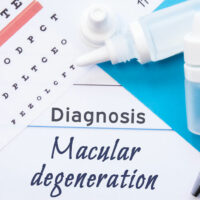Atrial Fibrillation – Causes, Signs, and Remedies

Atrial fibrillation, or AFib, is characterized by an irregular heart rhythm or arrhythmia in the atria or the heart’s upper two chambers. It causes a disturbance in the typical cycle of the electrical impulses in the heart. The condition results in a rapid and chaotic heart rhythm and poor blood movement from the upper chambers to the ventricles or the lower chambers. Below, we address the causes, symptoms, diagnosis, treatment, and management of AFib.
Causes
AFib, or a change in the electrical signals in the heart, can affect anyone, regardless of age. But it is more prevalent in older people. A few risk factors that amplify the condition’s susceptibility are:
Heart diseases
People with an underlying heart condition, like a heart attack, coronary artery disease, and heart failure, have a greater risk of AFib.
Hypertension
If left unchecked, high blood pressure can strain the heart and aggravate the risk of this disorder.
Familial link
People with a family history of AFib have a greater chance of suffering from the condition.
Sleep apnea
This sleep disorder can also increase a person’s susceptibility to AFib, especially if it is severe.
Besides the above, other chronic conditions like diabetes, asthma, and thyroid also put a person at risk of this heart problem.
Symptoms
While AFib might cause noticeable signs in some people, others might not encounter any symptoms. The signs to look out for include chest pain, fatigue, weakness, heart palpitations, lightheadedness, fainting, dizziness, and inability to exercise. Difficulty breathing, especially when lying down or performing any physical activity, is also one of the indicators.
The symptoms might vary over time and go from subtle to very apparent. Their timing can help specialists detect and treat atrial fibrillation. Hence, it is crucial to monitor the discomforts as and when they occur, understand their severity, and note how long they last.
Diagnosis
AFib is a progressive condition that aggravates over time. Although one might not show symptoms, the condition can come to light while testing for another heart condition. Here are some tests that help with a diagnosis:
Blood tests
They evaluate heart markers like electrolyte, thyroid, and cholesterol levels.
Chest X-ray
It helps spot AFib complications in the lungs and heart.
Stress test
Also known as a treadmill test, it helps monitor heart activity when it pumps faster and harder during an exercise.
Electrocardiogram
An ECG helps evaluate the electrical activity in the heart.
Echocardiogram
It employs sound waves to reproduce the heart’s moving image, study the atria’s size, and understand the organ’s overall function.
Transesophageal echocardiogram
It helps examine the heart’s atria via the esophagus. The sound wave test is administered via the throat to check for blood clots in the atrium.
Holter monitor
This portable monitor keeps a tab on the heart’s electrical activity for 24 to 48 hours. The procedure is beneficial as people are rarely affected all the time. After wearing a Holter monitor, patients perform their everyday activities while the device tracks irregular activity.
Treatment options
Treatment depends on the severity of the symptoms. And the first line of treatment employed by the doctor may also defer from case to case. Ideally, a treatment plan is developed to slow the heart down, monitor its rhythm, and avoid clots that usually trigger a stroke. It will include one or a combination of options to prevent blood clots.
In case the options do not work, the doctor will recommend one of the following procedures to reset the heart’s rhythm:
Ablation
Doctors make a tiny slit in one of the blood vessels to run a small tube into the heart. They then employ radio waves, laser, or extreme cold through the tube to burn the tissue responsible for AFib. It leads to the formation of scar tissues, which do not pass off-beat signals. Patients can also undergo robotic-assisted ablation, which ensures better precision. The doctor inserts a tiny robot or a video camera into the chest, which guides the formation of scar tissue that aids in maintaining a healthy heartbeat.
Mini maze
Most patients do not need open-heart surgery. This minimally invasive option works best for them. It is similar to ablation; the doctor makes three to four smaller cuts and inserts surgical tools, tubes, and a camera inside.
Pacemaker
It prevents the heart from beating slowly, especially if a person undergoes treatments to lower their heart rate.
Electrical cardioversion
It involves sticking a soft electrode pad on the chest or back to send an electric shock to the heart.
Convergent procedure
It is an amalgam of the mini maze and catheter ablation procedures. One surgeon makes a precise cut under the breastbone to produce radiofrequency energy outside the heart, and another doctor uses ablation in the pulmonary vein.
AFib patients are susceptible to a blood clot inside the heart. It can be dangerous because if this clot travels, it might result in a stroke. Thankfully, with the proper treatment, one can lower their risk.
Management options
Beyond treatments, some management tips reduce the chances of developing a stroke. These include:
A healthy meal plan
Instead of fatty foods, patients should opt for low-fat alternatives.
Physical activity
Working out for an hour daily can help improve circulation and lower AFib risk.
Controlling high blood pressure
One can achieve this by managing stress levels and reducing salt intake.
Monitoring blood sugar levels
Those with diabetes should be mindful of their sugar levels. Patients can swap sugary foods with healthy, naturally-sweet fruits.
Controlling cholesterol levels
One can manage cholesterol by adding more fiber to their meals and swapping saturated fats with unsaturated ones.
Typically, AFib comes and goes, but sometimes it stays on. Although not life-threatening, the condition can be severe as it might result in blood clots in the heart, which may induce a stroke.



